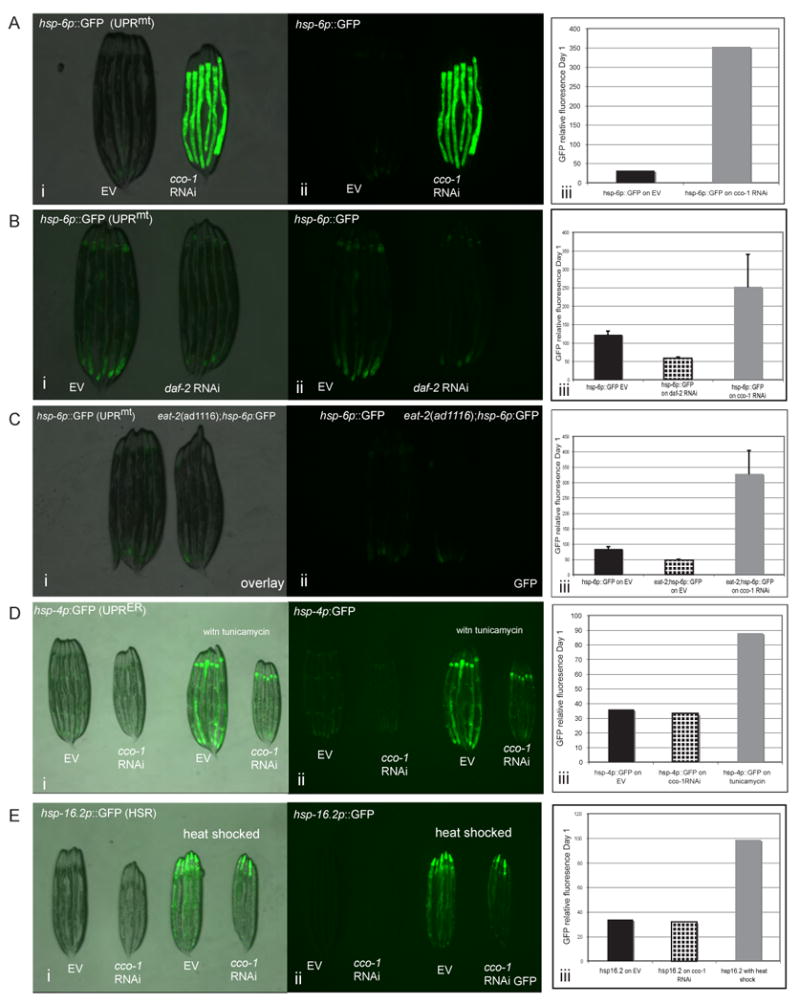Figure 3.

Induction of the UPRmt is specific to the ETC longevity pathway. A. hsp-6p∷GFP reporter worms fed empty vector (EV) containing bacteria have low levels of background GFP (i) overlay; (ii) GFP. hsp-6p∷GFP reporter worms fed cco-1 RNAi upregulate the UPRmt. Relative fluorescence was quantified using a fluorescence plate reader (iii). B. daf-2 RNAi does not induce hsp-6p∷GFP (i) overlay; (ii) GFP. hsp-6p∷GFP reporter worms were hatched on empty vector, cco-1, or daf-2 dsRNA expressing bacteria and allowed to grow to day 1 of adult hood. Relative fluorescence was quantified (iii). C. Dietary restricted eat-2(ad1116) mutant worms do not upregulate hsp-6p∷GFP reporter (i) overlay; (ii) GFP. Relative fluorescence was quantified (iii). D The UPRER is not induced by cco-1 RNAi, (i) overlay; (ii) GFP. hsp-4p∷GFP transgenic reporter worms were fed empty vector containing bacteria or cco-1 dsRNA bacteria. No fluorescence upregulation was detected (iii). Both EV and to a lesser extent cco-1 RNAi fed worms were able to upregulate the UPRER upon treatment with tunicamycin, (i and ii) which is known induce UPRER. Relative fluorescence of was quantified (iii). E. cco-1 RNAi does not induce a marker of cytosolic protein misfolding stress, (i) overlay; (ii) GFP. hsp16.2p∷GFP reporter worms were fed EV or cco-1 dsRNA bacteria. No fluorescence upregulation was detected (iii). As positive controls, heat shock for 6 hours at 31°C could induce the heat-shock response (HSR) and cco-1 RNAi did not block this response (i and ii). In all panels, error bars indicate standard deviations (SD).
